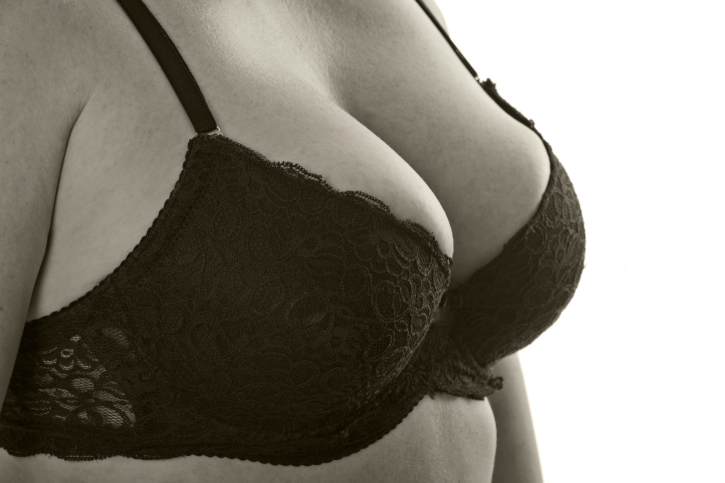
Are you wondering if your breast lumps are normal? There's a way to find out.
So you found a lump — now what? First, all breast lumps need to be evaluated by a trained medical professional. The good news is that the majority turn out to be noncancerous, especially in younger women.
First, don't panic...
80 to 85 percent of breast lumps are benign, meaning they are noncancerous, especially in women younger than age 40.
Not only that, but if you’re at an age where you’ve been having regular mammograms, and if those mammograms have been negative, odds are even better that your palpable (capable of being felt) lump is not cancer.
But how do you know? How do you differentiate between a lump that is breast cancer and one that is benign? What causes benign breast lumps? And do they go away on their own?
Breast Lumps Distinctions
Your breasts are made up of fat, nerves, blood vessels, fibrous connective tissue, and glandular tissue, as well as an intricate milk-producing system of lobules (where the milk is made) and ducts (the thin tubes that carry milk to the nipple). This anatomy in and of itself creates a lumpy, uneven terrain.
A breast lump, however, distinguishes itself from this background of “normal” irregularities: A breast lump can be solid and unmovable like a dried bean, or soft and fluid-filled, rolling between your fingers like a grape. It can be smaller than a pea or several inches across, although this larger size is rare.
Meanwhile, what typically differentiates a benign breast lump from a cancerous breast lump is movement. A fluid-filled lump that rolls between the fingers is less likely to be cancer than a lump that is hard and rooted to the breast.
This is not to say all benign lumps move and all cancerous lumps don’t.
While this is a good rule of thumb, the only way to know for sure is through the wisdom of your doctor and specialized medical tests, such as an ultrasound, a mammogram, or a fine needle aspiration, in which your doctor uses a tiny needle to extract a bit of the lump for a biopsy, or laboratory examination.
Another rule of thumb has to do with pain. Breast cancer does not usually present pain, but benign conditions often do, although there are exceptions to this as well.
MUST READ: Woman Walks 1,000 Miles Shirtless For Breast Cancer
Not all benign breast lumps will require additional testing, by the way.
If you find what appears to be a fluid-filled cyst during your menstrual period, your doctor may want to check your breast again at the end of your period to see if the cyst has disappeared.
If the cyst goes away, you and your doctor will know your lump was indeed benign and related to the hormonal fluctuations associated with menstruation.
A Variety of Benign Breast Lumps and Conditions That Are Normal
Most benign breast lumps and conditions are directly related to your menstrual cycle — to fluctuations in your hormones and to the fluid buildup that comes with your monthly period.
Other benign breast lumps and conditions may be related to plugged milk ducts, infections, and even breast injuries.
Here are some of the most common benign breast conditions:
- Fibrocystic changes. A general lumpiness that can be described as “ropy” or “granular,” these lumps are the most commonly seen benign breast condition, affecting at least half of all women. Symptoms of fibrocystic change include tender, fibrous, rubbery tissue; a thickening of tissue; or a round fluid-filled cyst. These changes, related to hormone fluctuation, may increase as you approach middle age and then disappear with menopause. Sometimes, your doctor will recommend limiting salt and caffeine in your diet to ease fluid buildup. You may also be prescribed hormones, in the form of birth control pills, to help ease particularly troublesome symptoms. Your doctor may also recommend a needle or surgical biopsy to make sure your breast condition is related to fibrocystic change and not cancer.
- Cysts. Related to fibrocsystic changes, these are round or oval sacs, measuring one inch to two inches across. They are tender to the touch and filled with fluid. They may come and go with your menstrual period, becoming larger and more tender at the beginning of your period and disappearing at the end. Your doctor may order an ultrasound or a fine needle aspiration to make sure it's a cyst and not something else. In very rare cases, when a cyst is particularly large or painful, your doctor may use a needle to withdraw and reduce the fluid inside it. Cysts generally affect women between the ages of 35 and 50.
- Fibroadenoma. Occurring in young girls and women in their teens and 20s, fibroadenomas are more common in those who use use birth control pills before age 20. This benign tumor ranges in size from microscopic to several inches across. It is movable under the skin, round and hard like a marble, and may be diagnosed by aspiration or removal of the lump. If the fibroadenoma shrinks or doesn’t grow over time, and your doctor is sure of the diagnosis, he or she may decide to simply leave it alone.
- Fat necrosis. This occurs when fatty breast tissue is damaged by injury to the breast. It results in the formation of round, firm lumps. It is more common in women with large breasts, particularly in women who are obese. Your doctor will most likely watch the lump through several menstrual cycles and may decide to remove it surgically. Sometimes the necrosis will produce what is called an oily cyst. Your doctor can drain this with a needle.
- Nipple discharge. Sometimes women experience nipple discharge with or without a breast lump. The color of nipple discharge related to benign fibrocystic changes can vary from yellow to green. A clear to milky discharge may mean a hormonal malfunction. Green-black discharge could be related to duct ectasia, a narrowing or blockage of the duct. It can even be bloody in appearance, which can, in fact, mean cancer. More than likely though, a red discharge means injury, infection, or a benign tumor. Your doctor may study the fluid under a microscope to determine its origin, particularly if there is also a mass or lump in your breast.
- Mastitis. An infection of the milk duct, this can create a lumpy, red, and warm breast, accompanied by fever. It occurs most commonly in women who are breastfeeding, but can occur in non-breastfeeding women as well. Treatment involves warm compresses and antibiotics.
- Other less commonly known conditions. Some medical conditions can also cause breast lumps, including hyperplasia, an overgrowth of cells in the breast ducts or lobules; adenosis, which causes enlarged lobules; intraductal papilloma, a wart-like growth of gland tissue that grows in the duct; and lipoma, which is a benign fatty tumor.
The risk for benign breast conditions increases for women who have never had children and those who have a history of irregular menstrual cycles and/or a family history of breast cancer.
If You Are Still Wondering If Your Breast Lump is Normal
Talk to a medical professional to evaluate all breast lumps. They will help you decide how to proceed. Most benign breast conditions are treatable. Some will even go away on their own. It's best to let your doctor be the one to tell you that.









